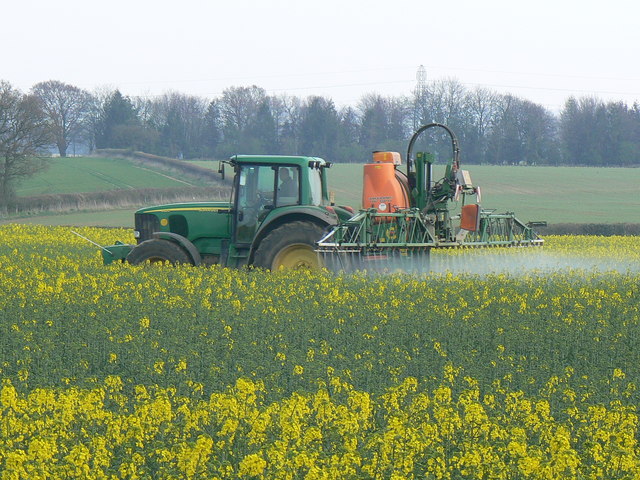
These New Synthetic Nitrogen Fertilizers Are about to Blow Up
Plants need nitrogen to grow, and each year as crops are harvested, those ears of corn and apples pull nitrogen (and other nutrients) from the soil, leaving it depleted. In order to grow crops on the land again, nutrients, including nitrogen, must be added back into the soil.
Nitrogen is a bit of a conundrum because while it makes up 80 percent of the air around us, atmospheric nitrogen is unusable by plants.
October 14, 2015 | Source: Mercola | by Dr. Mercola
Plants need nitrogen to grow, and each year as crops are harvested, those ears of corn and apples pull nitrogen (and other nutrients) from the soil, leaving it depleted. In order to grow crops on the land again, nutrients, including nitrogen, must be added back into the soil.
Nitrogen is a bit of a conundrum because while it makes up 80 percent of the air around us, atmospheric nitrogen is unusable by plants. The form of nitrogen that plants use to grow is called nitrate, and, as Mother Jones reported, traditional agriculture techniques naturally help cycle usable nitrogen back into the soil:1
“… [F]or most of agriculture’s 10,000-year-old history, the main challenge was figuring out how to cycle usable nitrogen back into the soil. Farmers of yore might not have known the chemistry, but they knew that composting crop waste, animal manure, and even human waste led to better harvests.”
Then, in 1909, German chemist Fritz Haber developed a process to synthesize nitrate from the air. First nitrate was primarily used by the munitions industry during World War II (nitrate is explosive and was used to make nitrogen bombs).
In the post-war era, the use of nitrate shifted from munitions to fertilizer. The availability of synthetic fertilizer was instrumental in the shift from traditional to industrial farming, including the cultivation of new strains of corn that were reportedly “dependent on higher fertilizer applications.”2 Mother Jones continued:
“Today, the United States remains a massive nitrogen-fertilizer user; with just 5 percent of the world’s population, we consume about 12 percent of global nitrogen-fertilizer production. And corn — which according to the USDA ‘requires the most nitrogen per acre’ of any crop — remains at the center of our agriculture, covering 30 percent of farmland each year.
While our reliance on cheap nitrogen fertilizer occasionally (though quite rarely) results in attention-grabbing explosions, the real problems are more subtle and long-term.”
The Environmental Toll of Synthetic Nitrogen Fertilizer Is Steep
Applying an abundance of synthetic nitrogen fertilizer, year after year, to our farmland is creating untold amounts of environmental damage. Marine dead zones (when oxygen concentrations fall below the level necessary to sustain most animal life) are one common consequence.
As fertilizer runs off of farms in major farming states (like Minnesota, Iowa, Illinois, Wisconsin, Missouri, and others), it enters the Mississippi River, leading to an overabundance of nutrients, including nitrogen and phosphorus, in the water. This, in turn, leads to the development of algal blooms, which alter the food chain and deplete oxygen, leading to dead zones.
One of the largest dead zones worldwide can be found in the Gulf of Mexico, beginning at the Mississippi River delta.3 Fisheries in the Gulf of Mexico have been destroyed as a result.
Then there is the nitrous oxide, a gas said to be 300 times more potent than carbon dioxide as a greenhouse gas and labeled “the world’s most significant ozone-depleting substance.”4
You can view the pervasiveness of nitrogen pollution in the Mississippi River Basin via this Ceres map. According to the non-profit organization GRAIN:5
“The [Intergovernmental] Panel on Climate Change (IPCC) estimates that for every 100 kg of nitrogen fertilizer applied to the soil, one kg ends up in the atmosphere as nitrous oxide (N2O)…
In 2014, this was equivalent to the average annual emissions of 72 million cars driven in the US – about a third of the US fleet of cars and trucks.
New research, however, shows that these alarming numbers are at least three to five times too low. The use of chemical fertilizers this year [2015] will likely generate more GHG [greenhouse gas] emissions than the total emissions from all of the cars and trucks driven in the US.”
And here’s another factor to consider: synthetic fertilizers destroy natural nitrogen found in the soil, which means farmers must use increasing amounts of the fertilizers each year just to sustain their yields.
It’s estimated that in the last four decades, nitrogen fertilizer efficiency has decreased by two-thirds while their use per hectare of land has increased by seven times.6
Nitrogen application also pollutes water supplies. As noted by Christine Jones, PhD: “The USDA estimates that the cost of removing nitrate from U.S. drinking water is more than $4.8 billion per year…”7
